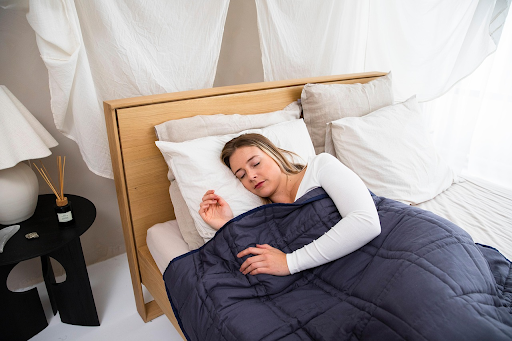Your comfort, sleep quality, and even the look of your bedroom will be greatly affected by the fabric you choose when it comes to selecting the ideal
Your comfort, sleep quality, and even the look of your bedroom will be greatly affected by the fabric you choose when it comes to selecting the ideal bedding. Long valued for its softness, breathability, and price, cotton has ruled the bedding market. However, in recent years, linen bedding has surged in popularity—and for good reason. Linen, made from the fibres of the flax plant, provides a rich feel, unusual texture, and a variety of advantages which put it far above cotton in both use and attractiveness. This article will look at why linen bedding is usually seen as better than cotton and why it could be time for you to change.
Superior Breathability and Temperature Regulation
Among the many benefits of linen over cotton, its exceptional breathability ranks among the most interesting. Linen fibres are naturally hollow, which allows air to move more freely than cotton’s denser weave. Linen bedding therefore excels at controlling temperature all night long. In hot weather, it wicks away moisture and heat, so keeping you cool and dry.
In colder months, linen insulates and keeps heat without overheating. Linen is a year-round bedding option because of its flexibility, which is ideal for those who often sleep hot or live in areas with great seasonal temperature variation. Though breathable to some extent, cotton just cannot equal linen’s natural temperature-regulating qualities. T & A textiles wholesale bedding has the best cotton and linen fabric, at a reasonable price.
Unmatched Durability and Longevity
Among the strongest natural fibres in the world is linen. Linen bedding can survive for decades when properly maintained since it is far more durable than cotton. Linen doesn’t lose its strength or structure; with every wash it gets softer and more comfortable.
By contrast, especially with regular washing, cotton can wear out more quickly as fibres weaken and break down over time. This makes linen a smart long-term investment. Though it may be more expensive initially, linen bedding usually pays for itself by outlasting several sets of cotton sheets. For eco and budget conscious shoppers, this durability is a major advantage.
Effortless Elegance and Timeless Aesthetic
Linen bedding offers a naturally relaxed, effortlessly stylish look that cotton seldom achieves. Linen’s somewhat wrinkled texture is not only accepted but also praised for its natural appearance and casual elegance. Linen bedding is therefore ideal for contemporary, minimalist, and rustic design aesthetics.
Unlike cotton, which sometimes calls for exact folding or ironing to keep a polished look, linen looks better the more lived-in it becomes. Its visual attractiveness and tactile distinctiveness together turn a basic bed into a declaration of comfort and style.
Environmentally Friendly and Sustainable
From an ecological point of view, linen beats cotton. Flax, the plant from which linen is made, needs far less water and less pesticides to grow than cotton. Often grown using the whole plant, flax can flourish in low-quality soil and produce very little agricultural waste.
Usually more environmentally friendly, the linen manufacturing process creates less carbon footprint. By contrast, cotton farming is well known for its high water use and regular pesticide application, which makes it less environmentally friendly unless you purchase organic versions. Choosing linen is not only a luxury but also an environmentally conscious choice.
Comfort That Improves With Time
One of the most cherished qualities of linen bedding is its change over time. New linen sheets may initially feel a bit coarse or crisp, but with every wash, they become softer and more pliable. Unlike cotton, which tends to lose its softness after repeated washing, this natural evolution is Linen, rather than wearing out, wears in to fit your body and sleep patterns to produce a bespoke comfort level. For many users, this “lived-in luxury” feel is the defining feature that distinguishes linen from other textiles.
Low Maintenance and Easy Care
Though it is known for luxury, linen is rather low upkeep. Its naturally crinkled texture is part of its charm, so it need not be ironed. Linen also resists fading and pilling, so maintaining its fresh and appealing appearance even after years of use.
Its strength means you don’t have to treat it with great care, although it does gain from air drying or tumble drying on low. By contrast, cotton could need more work to maintain its neat appearance, particularly if you like a crisp, wrinkle-free bed. Linen keeps a high-end look and feel while it simplifies your laundry schedule.
Also Read About: Eva Marcille Twin Sister The Truth Behind the Rumors and What You Should Know
Final Thoughts
Although cotton bedding has its advantages and is still a good choice for many, linen shines out as a better choice in almost every respect. Its breathability, longevity, hypoallergenic qualities, and graceful look provide a sleeping experience that cotton just cannot match.
Linen has rightly earned its position as the bedding of choice as more people give quality, sustainability, and long-term comfort in their home essentials top priority. Linen bedding is not just worth considering; it’s worth committing to if you’re ready to improve your sleep and include a bit of ageless luxury to your bedroom.

COMMENTS